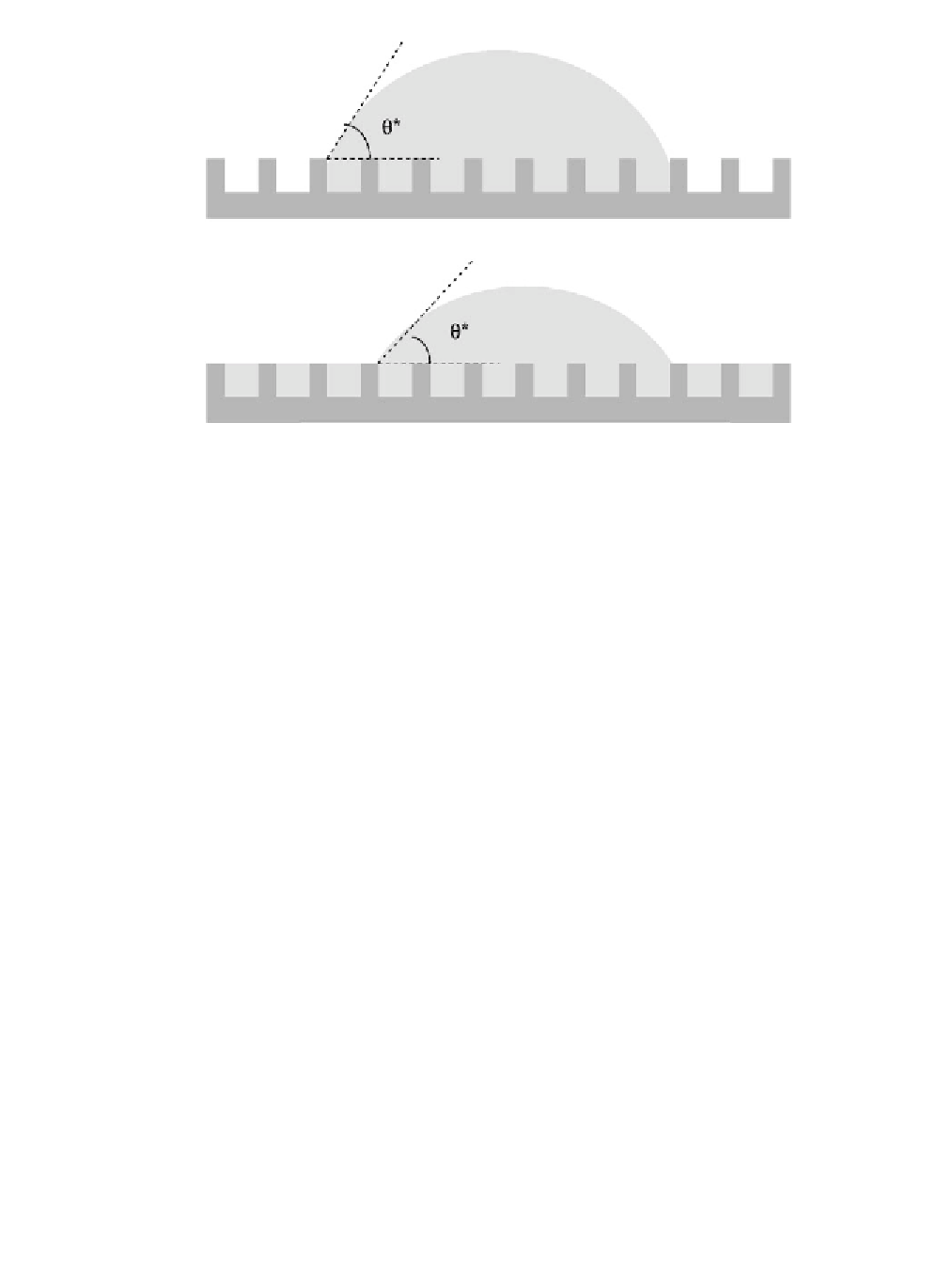Biomedical Engineering Reference
In-Depth Information
Figure 3.75
The two possible morphologies of a droplet on a wetting textured surface.
a critical angle comprised between 0 and
π
/2. In the Wenzel regime (
q
>
q
crit
), the
contact angle is
*
cos
θ
=
cos
θ
(3.95)
r
If
q
<
q
crit
, a film forms, but the remaining droplet has a contact angle defined by
*
)
cos
θ
= -
1
f
(1 cos
-
θ
(3.96)
This expression shows that the presence of a film improves the wetting (
q
*
<
q
),
but it is not possible to induce a wetting transition (total wetting) by texturing a
solid: (3.96) shows that complete wetting
q
*
= 0 requires
q
= 0.
Conclusion/Discussion
A complete diagram of wetting transitions is shown in Figure 3.76 [46, 47]. In the
case of a hydrophobic substrate, if the Young angle
q
is such that
q
>
q
i
where
q
i
is defined by cos
q
i
(
f
- 1)(
r
-
f
), the droplet stays on the pillar tops (fakir effect),
producing a superhydrophobic situation. If
π
/2<
q
<
q
i
, the droplet is in the Wenzel
regime, completely in contact with the surface of the pillars, with a contact angle
larger than the Young contact angle. In the case of a hydrophilic substrate, if the
Young contact angle
q
is such that
π
/2>
q
>
q
crit
, the droplet is in the Wenzel regime,
with a real contact angle
q
*
smaller than
q
. For
q
<
q
crit
where
q
crit
is defined by
cos
q
crit
(1-
f
)(
r
-
f
), the liquid spreads between the pillars and leaves a droplet
above the pillars with a contact angle smaller than
q
.
3.9 Conclusions
This chapter is devoted to the study of surface tensions, capillary forces, and micro-
drops in microsystems. Starting with the notion of surface tension, the fundamental

